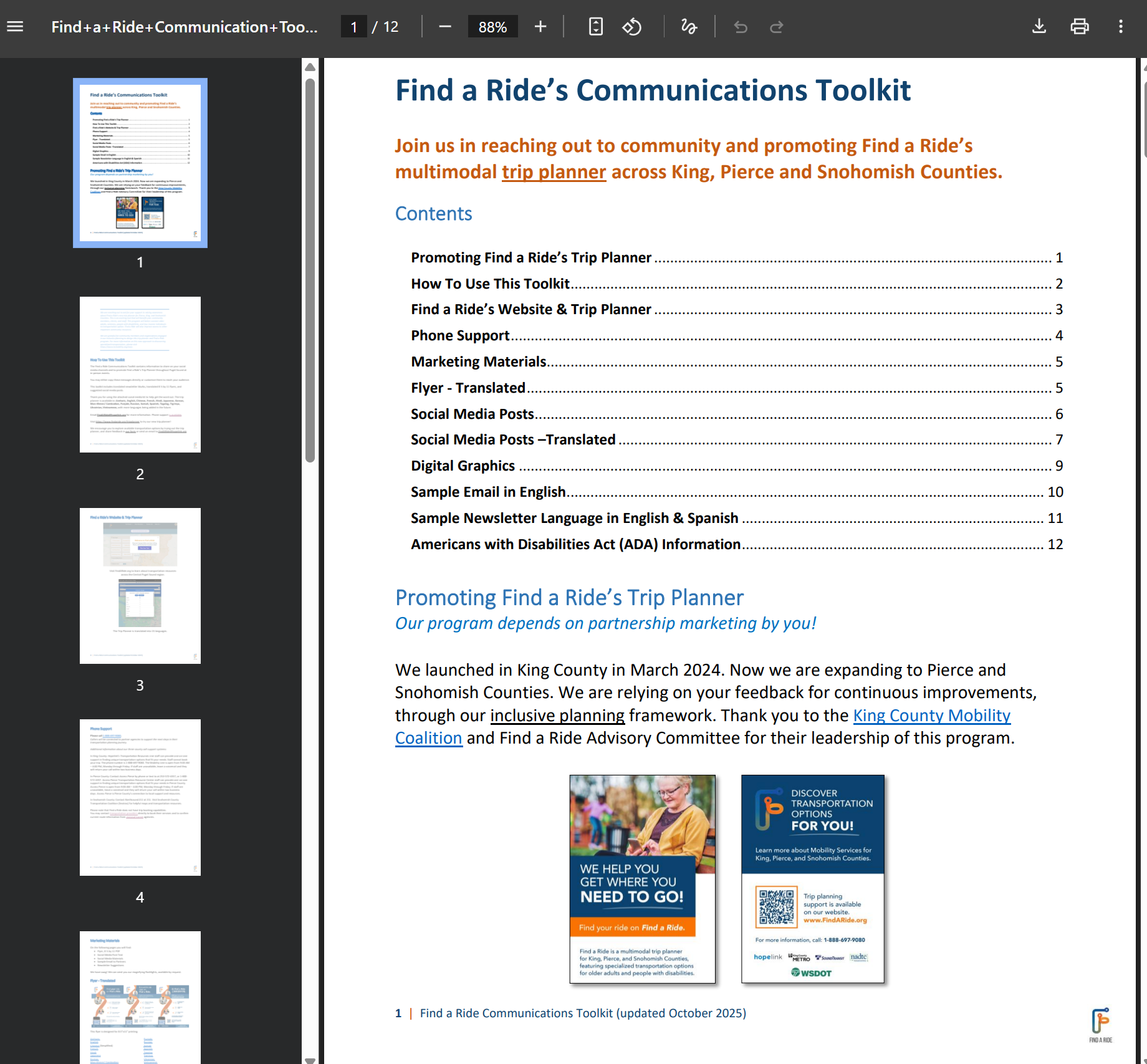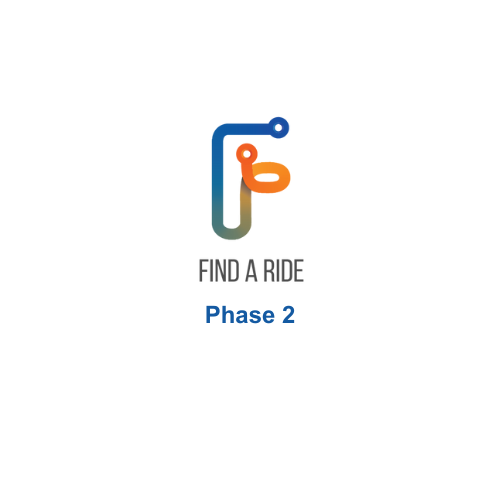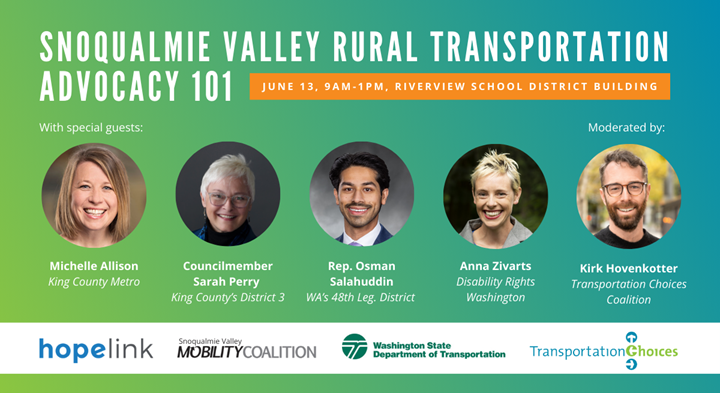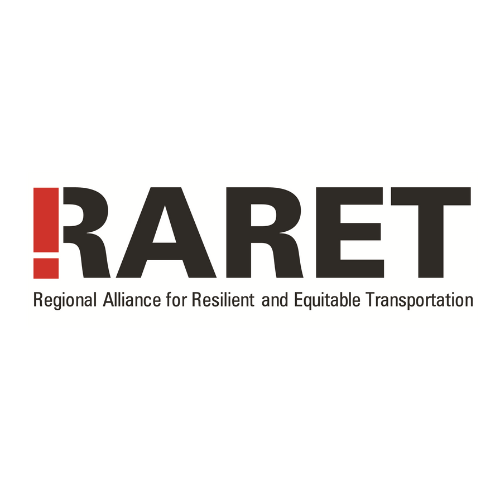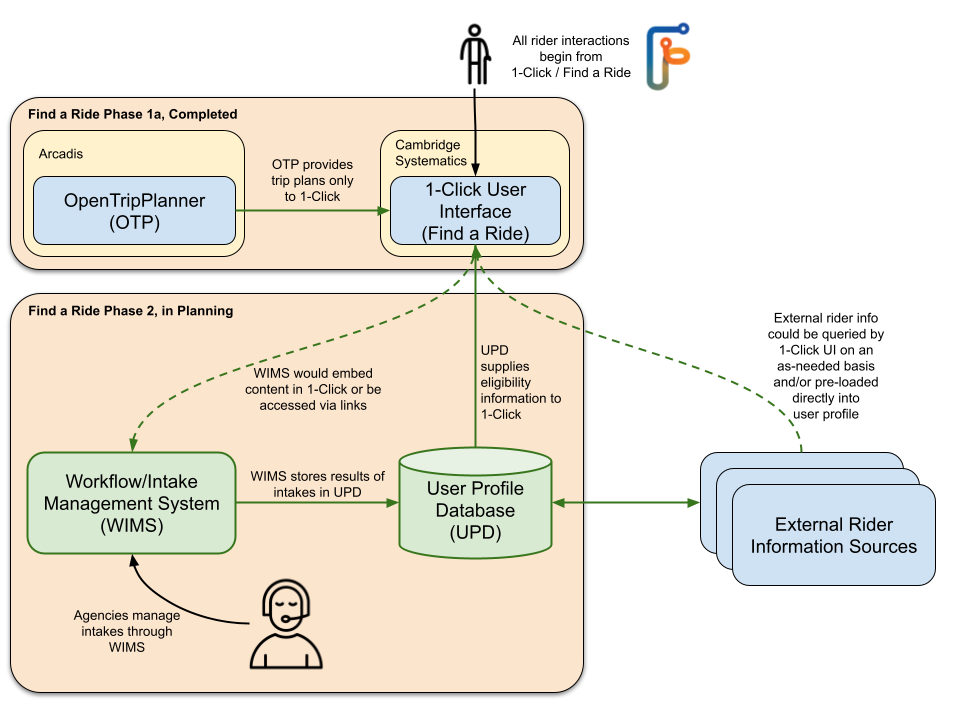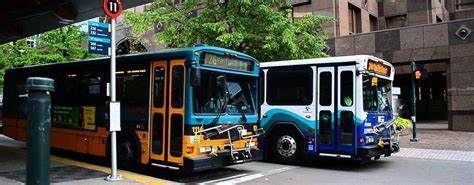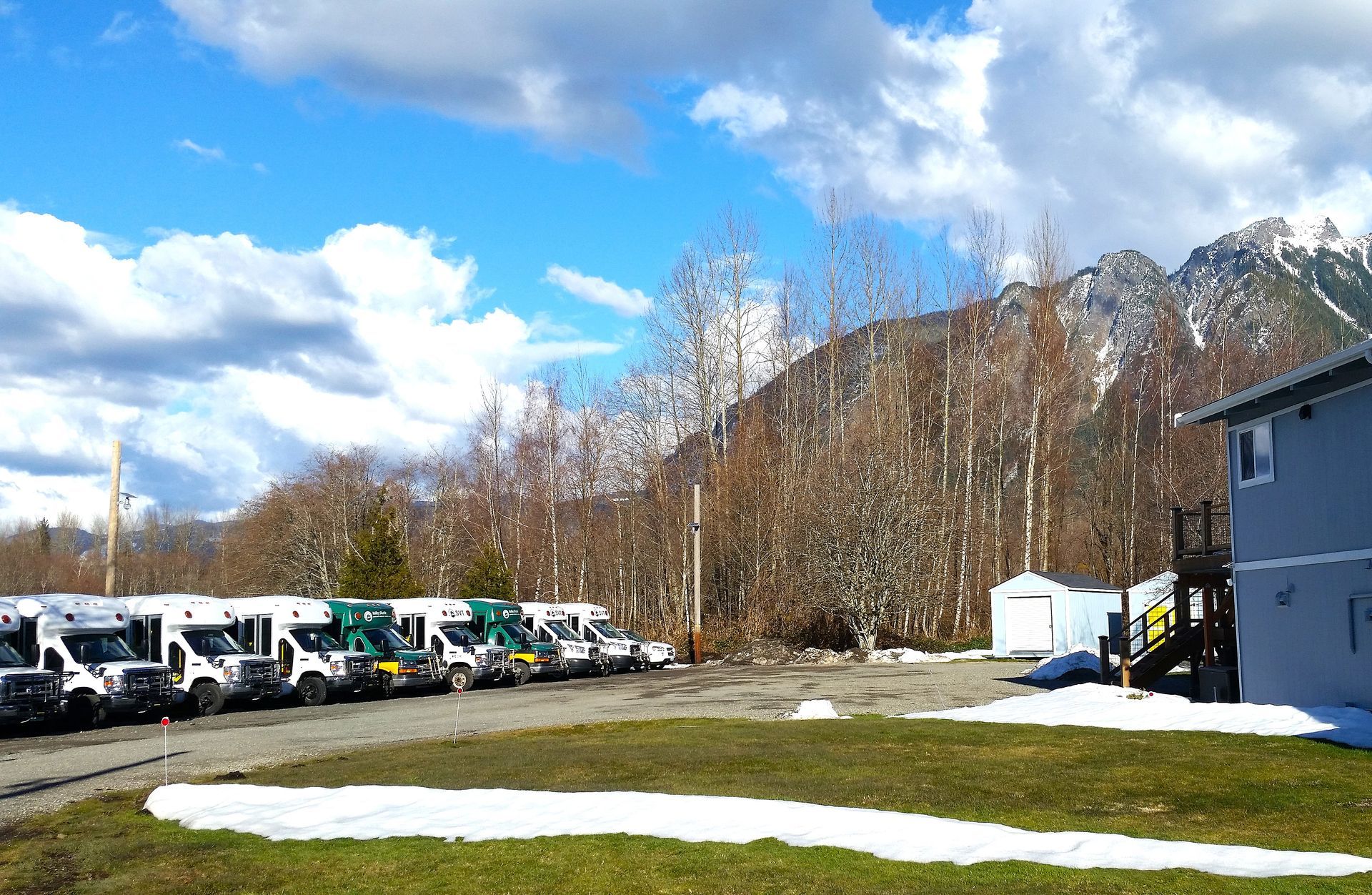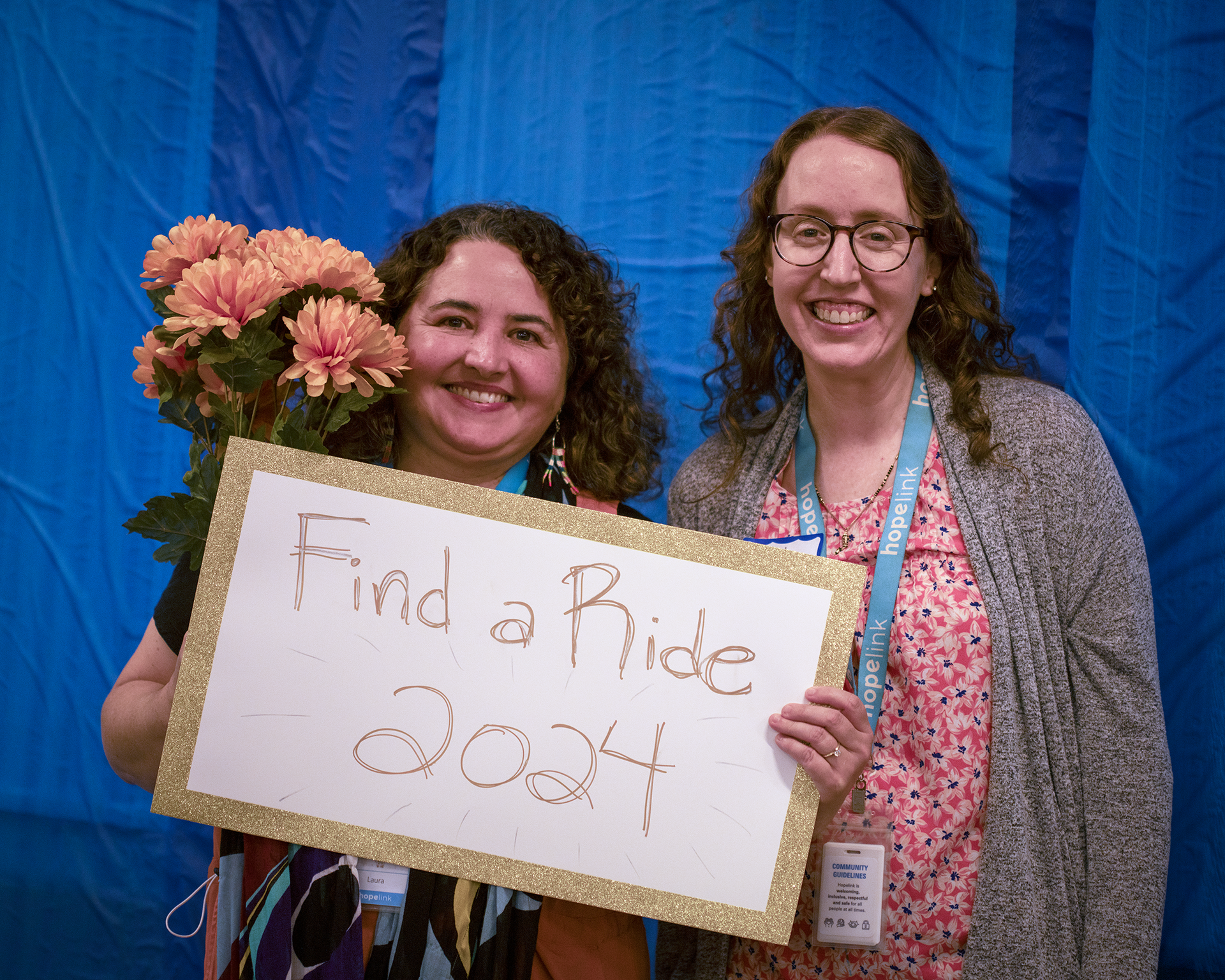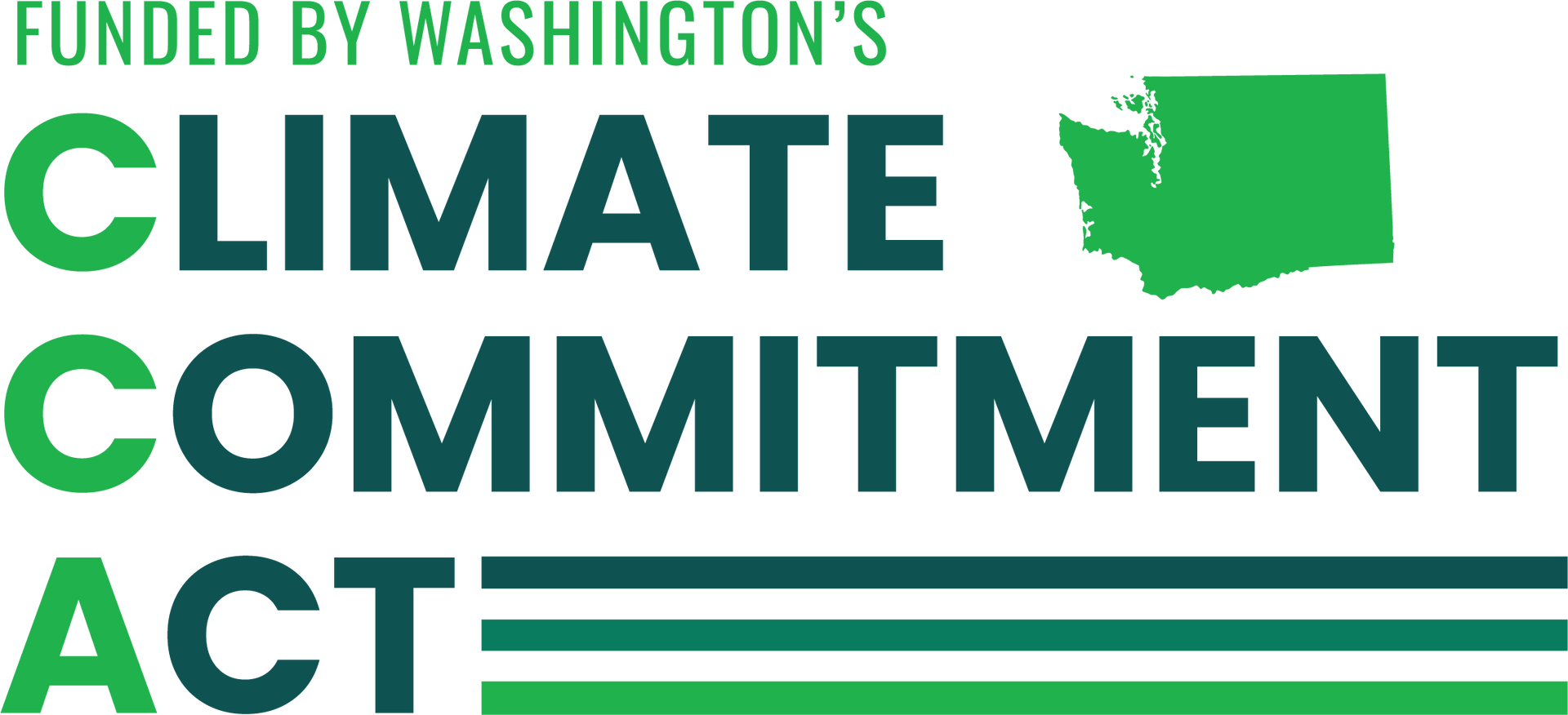Volunteer Driving during COVID-19
June 15, 2021
Before there were vaccines, there were drivers... and there's a need for volunteer drivers now more than ever.
Without volunteer drivers, thousands of people in our region would be left without adequate transportation options. We are thankful for the time and energy they contribute every day, especially in times of crisis when their services become even more critical.
Take the time to thank a volunteer driver today – and read on to learn about the volunteer experience from their own perspective! If you're interested in becoming a volunteer driver, view resources at the bottom of this post or visit www.findaride.org/volunteer
to find out where to start!
Mobility and transit are the tangible and intangible connectors we use in life to access services, community, and make essential trips. Yet, in our daily lives, managing transportation is a commonly underrated factor in our interactions with the outside world. And for some, community programs fulfill this transportation need in places where they'd otherwise go unmet.
While transportation programs, such as public transit and the volunteer-driver programs discussed here, are ingrained into the fabric of our communities constantly – the value of connection becomes even more emphasized in times of crisis. More than ever, we recognize that a supportive mobility network plays a vital role in keeping society functioning. We're seeing that mobility connects essential workers to employment. Mobility connects people who are experiencing illness to recovery. And amongst the heightened needs, mobility connects us to our friends, family, and communities. Past, present, and future, we rely on transportation services to get us to where we need to go.
COVID-19 has reminded us how impactful our transportation system is; it has reminded us who is connected, how they connect. Moreover, this crisis has shown how necessary mobility is to access. And in this realization, we've been hearing an appreciation echo from various transportation programs -- not just about the services they provide to others as lifelines when mass transit scales down, but about the people providing a service to them: volunteer drivers.
Volunteer drivers are how many smaller community-based transportation providers sustain their services. Volunteer drivers lend their time and energy to getting people where they need to go, developing personal relationships along the way, and filling the transit gaps in our community. Their clientele tends to be individuals who require unique support and are dependent on their services. For many volunteer drivers, continuing to work during this time was a decision as natural as the desire that initially prompted them to serve.
To better understand their roles and insights on driving others during COVID-19, I talked to five volunteer drivers in the Central Puget Sound region. Each of them represented a variety of programs that meet the mobility needs of diverse clients. These five drivers all expressed different reasons for getting involved with mobility, and yet their stories shared significant undertones about giving back and being involved in community work. All authentically answered with an innate will to provide service. Some mentioned an intentional desire to support elders, while others appreciated the flexibility of this style of service. Then others mentioned their personal experience needing transportation options that prompted their involvement. Whatever their reason for driving, the choice to be good-hearted and give back seemed simple and obvious to all of them.
I spoke to these drivers specifically about their work during COVID-19. They shared with me some trends that they noticed in both their service and clients. For example, one driver talked to me about the shift from transporting people to delivering food. This was a transition he lobbied for himself, quickly realizing the need to connect the people he serves with food during COVID-19 when driving them to and from the food bank was no longer an option. He also noted that this might even be a more accessible option for higher-risk community members or riders with disabilities, who would typically carry their grocery bags themselves. In describing this to me, I recognized this volunteer driver's commitment to his role and his automatic aptitude for problem-solving. It was evident that it was the will to serve behind his volunteering, and he was dedicated to using his efforts as a volunteer driver to meet the needs of those he interacts with.
Interestingly, a few drivers shared that COVID-19 was not always the most pressing thing on the minds of their clients when it comes to prioritizing safety. Around half of the volunteer drivers noticed elevated anxiety in their riders concerning Covid safety; the other half of volunteers noted relative calm in their riders. All drivers mentioned that the key to feeling secure and safe was the support they received from their host driver programs. Their programs provided them with personal protective equipment and strict safety protocols to follow before, during, and after their rides. This support was crucial in cultivating a good experience for the riders and those driving. Many of the drivers commented on the policy of riders having to sit in the backseat as opposed to the front for distancing -- stating that this makes it harder to connect with them, but they understand the value in it. One driver said he tried not to mention the virus because it's always on everyone's mind anyway.
Still, adjustments are hard. One driver told me about a rider that had trouble talking to her through the mask. She noted that they had to pull over and write instructions on a piece of paper due to mask requirements. It was difficult not to chat with him during the ride, she stated, but necessary. Another driver believes the people relying on their rides have become even more dependent on them, as their pre-COVID support networks are sheltering in place. This same driver shared a story with me about a woman who needed to quarantine in her room for two weeks after a doctor's appointment, sharing that the resident sounded lonely and sad without opportunities to socialize through things like communal dining. The value of interaction is something volunteer drivers put a lot of emphasis on when it comes to serving their priority clientele.
Before finishing my conversations with the volunteer drivers, I asked if there was anything else they might wish to share with readers of this article. The motivation each driver had in contributing to their community and investing in the lives of the people they serve coalesced in their responses. Almost everyone I talked to paused before conveying a version of the following: If you can get out and drive, do it.
The overwhelming gratitude and positivity you receive on behalf of those you are driving for is extraordinary. Some drivers shared the same thought process: I'm healthy, I have the time, and these people need the help. If I'm not doing it, will it get done?
Many people feel drawn to give back during the pandemic. Volunteer driving is a way to support access to vital services and, nowadays, bring vital services to people in need. As many of the drivers mentioned, driving for these programs provides flexibility and agency in designing your schedule as you get to accept or decline trips. And as reflected in each of the conversations I had with drivers, getting people around facilitates a connection that goes far beyond the already critical nature of providing a trip to someone who needs it. Relationships are built, trust is gained, stories are told, and people are heard.
Don't know where to start? Lucky for you, resources exist! Check out FindARide.org's Volunteer Driver Programs page, where you can check out tools like the Driver Guide to Volunteer Transportation in King County. Until August 31st, 2021, simply fill out this Volunteer Driver Interest Form, which acts as a first step in requesting a Mobility Manager who can help you decide which program best meets your volunteer interests.
Mobility News
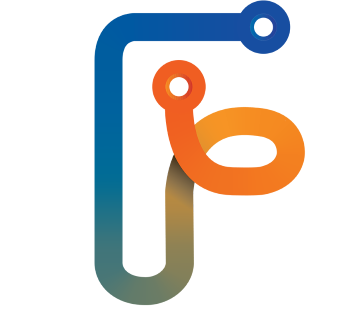
Funding Will Support Find a Ride’s Trip Planner Experience In June 2024, the U.S. Department of Transportation's Federal Transit Administration (FTA) announced the award of funds for a Washington State Department of Transportation (WSDOT) supported program. Find a Ride is a multi-phase One-Call/One-Click project under the supervision of the King County Mobility Coalition and Hopelink’s Mobility Management program. Find a Ride was awarded $519,496 through the FTA's Innovative Coordinated Access & Mobility (ICAM) Pilot Program , with the total funding for the second phase of the project close to $700,000 through regional match support. Hopelink submitted the Find a Ride grant application with matching support from WSDOT, King County Metro, Sound Transit, and Seattle Department of Transportation . With this award, the program will be able to invest in software to significantly improve the user experience for riders. Using a multi-phased approach, the Find a Ride trip planner tool will connect riders to specialized transportation services all in one centralized service, just one click or one call away from their destination. The tool is being developed through an inclusive planning process with input from regional transit providers and advocates from communities most impacted by transportation barriers, such as older adults and people with disabilities. Hopelink is very pleased to receive federal support for Find a Ride, our One-Call/One-Click project," said Susan Carter, Hopelink VP of Transportation "With the launch of our ground-breaking trip planner in March of 2024, we are excited to build on the momentum for Phase 2 of our project." The Federal Transit Administration (FTA) announcement included $7.8 million for 17 projects to improve public transportation for people with disabilities, older adults, and low-income individuals. The ICAM program supports the Biden-Harris Administration's commitment to improving public health, including mental health. Find a Ride received support from the State of Washington Health Care Authority, Congresswoman Suzan K. DelBene (WA-01), Puget Sound Regional Council, Shared-Use Mobility Center, Connect Snohomish County, Snoqualmie Valley Transportation, Pierce Transit, The Taskar Center for Accessible Technology at the Paul G. Allen School of Computer Science & Engineering, Volunteer Services – King County (A Program of Catholic Community Services), Aging and Disability Services, Arcadis, Center For Independence, City of Kirkland, Crisis Connections, Homage, Sound Generations, Indian American Community Services, King County Mobility Coalition, and Pierce County Human Services . Project administrators also received letters of support from dedicated project advisors, including several individuals with disabilities participating in the inclusive design of the project. Learn more about Find a Ride’s roadmap and inclusive planning process on our project website . Learn about the software development of Find a Ride’s innovative trip planner . Since 1971, the Hopelink has provided stability-building programs for people experiencing poverty, immigrants and refugees, and people with disabilities in north and east King County. The agency’s eleven programs work in tandem to fill gaps, supporting each family or individual’s unique needs. These include housing, food assistance, financial assistance, adult education, energy assistance, financial capabilities, family development, Dial-a-Ride Transit, non-emergency medical transportation, and mobility management. *** Read the full FTA announcement for more information. The full text is provided below: Biden-Harris Administration Announces $7.8 Million in Grants to Help Connect People to Health Care and Other Critical Services Thursday, June 6, 2024 The President's Bipartisan Infrastructure Law adds significant funding to transit pilot program WASHINGTON – The U.S. Department of Transportation's Federal Transit Administration (FTA) today announced $7.8 million for 17 projects that will improve public transportation for people with disabilities, older adults, and low-income individuals. The grants support organizations that coordinate public transportation for underserved groups, allowing them to access healthcare, community services, education, and jobs by building partnerships among health, transportation, and human services providers. FTA's Innovative Coordinated Access & Mobility (ICAM) Pilot Program – supported by more than $24 million in funding over five years from the President's Bipartisan Infrastructure Law – increases access for Americans all over the country, with a focus on health and wellness. Today's announcement supports transportation improvements, from designing new trip scheduling technology to buying transit vans, in 15 states. "Transportation is a lifeline that connects Americans to essential services, like health care, and today we're supporting innovative projects to help more people connect to the help they need" said U.S. Transportation Secretary Pete Buttigieg . "These transportation projects, made possible by President Biden's Bipartisan Infrastructure Law, will help people with disabilities, older adults, and low-income individuals access the health services they need." By improving the coordination of transportation to critical services for people who have been underserved in the past, the ICAM program supports the Biden-Harris Administration's commitment to improving public health, including mental health. The program provides an opportunity for older adults and people with disabilities and in low-income communities. "This program supports statewide and regional strategies to help ensure people who are especially challenged in accessing healthcare can reach those critical services,” said FTA Acting Administrator Veronica Vanterpool . "We are pleased to provide resources that help reach into the sometimes-overlooked areas of our nation to ensure no one is left behind." Some of the selected projects include: The Illinois Department of Transportation will receive $1.8 million to design and implement an integrated technology system for trip scheduling and fare collection that will facilitate non-emergency medical transportation trips and interagency passenger transfers. The program will integrate technology enhancements to improve mobility for people in 20 rural counties in southern Illinois through Shawnee Mass Transit, Rides Mass Transit, South Central Mass Transit, and Monroe Randolph Mass Transit. The Central Oklahoma Transportation and Parking Authority (EMBARK) will receive $415,900 to support the expansion of the existing coordinated transportation services through the purchase of two vehicles and associated vehicle technology systems. This project will meet the growing transportation demand for older adults, people with disabilities, low-income individuals, and transit-dependent populations with improved access to social services, education programs, workforce development programs, non-emergency medical treatment, and wellness and nutrition services throughout Oklahoma City. The West River Transit Authority (Prairie Hills Transit) in South Dakota will receive $269,280 to buy a contactless payment technology system that will enhance safety, improve reliability and the rider experience, and make transit more accessible to residents in the Black Hills region. A trip planning mobile app and website will help facilitate intercounty connections and regional service by linking riders with providers for trips across multiple service areas. The platform will improve coordination of services for veteran service organizations, education institutions, healthcare facilities, women’s and homeless shelters, home healthcare organizations, and workforce centers. In response to the Notice of Funding Opportunity (NOFO), FTA received 24 eligible proposals. Projects were selected based on criteria described in the NOFO .








